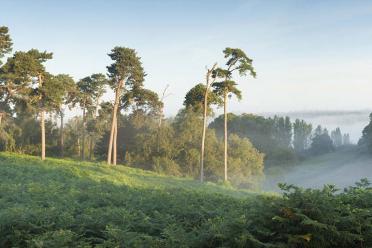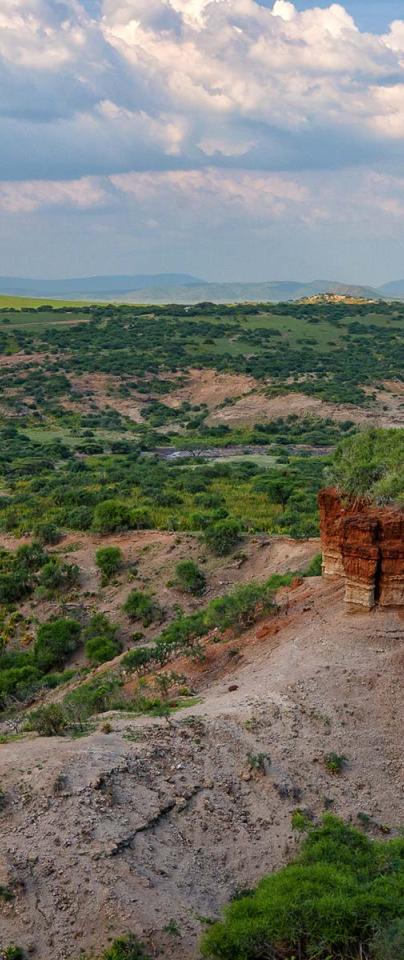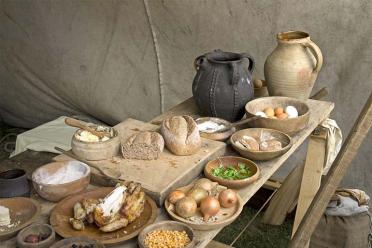Anglo-Saxon-British human ancestry starts in East Anglia
Where did we come from? Archaeologists and scientists look to the East of England for answers on the origins of our DNA.
Where did we come from? Archaeologists and scientists look to the East of England for answers on the origins of our DNA.
Further evidence has recently emerged from archaeological sites around Cambridge and Essex of strong links between British and Anglo-Saxon human ancestry. The study, published in Nature Communications, has clarified the timescale and extent of populations mixing, which appears more extensive than previously thought.
Anglo-Saxon arrivals in Britain, dating around 450-600CE, had a notable influence on the genetics of the wider British population, estimated as 25-40 per cent shared ancestry with Dutch and Danish folk.
The highest extent of this range is represented in the East of England – famous for the spectacular burials at the East Anglian cemetery of Sutton Hoo – indicated that this area received the highest number of Anglo-Saxon settlers.
The research describes how modern, high-throughput DNA sequencing methods were used to compare ten ancient skeletons dating from the Iron Age to the Anglo-Saxon period, with over 430 samples from modern European populations. The specimens were excavated at Oakington, Hinxton, Linton and Saffron Walden – in the Cambridgeshire and Essex areas.
Full genome sequencing allowed the detection of subtle, rare genetic elements, which in turn reveal the fine scale population structure.

A genome research Institute is building a new facility. When the ground works get under way, the builders find remains of burial places. Archaeologists come to examine the grounds and take away the bones, and building work continues.
Fast-forward a few years – with the birth of the new high-throughput sequencing and the news about the Neanderthal genome being sequenced – the time has come to revisit the question: who were these people and where did they come from?
Suddenly, natural sciences and computational sciences are at the disposal of the archaeologists for a complete new outlook on who that lived in the East of England in the Iron Age and Anglo-Saxon times were related to.
The evidenced based on the various artefacts that were found will be combined for the first time with a genetic assessment of the DNA that is still in the remains’ bones. The first hurdle, however, was to find intact DNA.

the genome campus under where the first bones were found.

In the centuries gone by since the bodies were left for rest, all the soft tissue had degraded and microbes had got into the bones. We wanted to find genuine ancient human DNA; not the DNA of the microbes that live in the soil, neither the DNA of the archaeologists who carried out the excavations.
The best place for finding intact DNA is the femur (thigh bone), the biggest bone of the human body. The teeth are also a good source of DNA because the strong enamel keeps the inside of the tooth well protected. It was my co-author who went to extract the teeth from the later samples with the archaeologists – not such a typical task in computational genomics.
In the end, teeth from three different burial places and 24 different human remains were sent to Adelaide in Australia to have their DNA extracted in specialised conditions to avoid modern human contamination.
It turned out that 14 of the samples, were too degraded, and not enough DNA could be extracted. The other ten samples came back in small tubes containing the DNA library to be sequenced at the Wellcome Trust Sanger Institute, the genome campus under where the first bones were found.
DNA is an organic molecule that will degrade over time, and this was clear in the sequence data that came from the sequencers; typically an Illumina sequencer can generate sequences that are up 150-250 base pairs long, however, the ancient DNA was generally only on fragments of about 50 base pairs long.
This was good news – it looked like the samples were genuine old DNA – had it been sequenced perfectly, there would have been a concern for modern contamination. The ancient DNA also showed the expected degradation patterns.
In order to assess the age of the samples, radiocarbon dating was carried out, resulting in some of the initial classification being more accurate. In the end, there were two men and one woman from the Iron Age and seven women from early to late Anglo-Saxon period.

the genome campus under where the first bones were found.



The human genome can store the history of our ancestry back to the first humans in Africa

There are specific parts of DNA that pass down the maternal and paternal lines, and these are regularly used for studying human ancestry. The smallest part of the human genome, is the mitochondrion, a small cellular organism of only 16,569 base pairs long.
The mitochondria are inherited from the mother’s side only, so analysing the mitochondria, maternal lines can be traced. For males, the Y chromosomes are passed done the paternal line and give a direct link to the paternal ancestry.
In our samples, we had only two men, both were from Iron Age, and despite the highly fragmented nature of the DNA, we were able to assign them to the haplogroup R1b which is the most common in modern Britain, particularly Wales where over 92 per cent of men belong to this haplogroup.
When the mitochondrial DNA sequences were mapped to a reference, known as the Cambridge Reference Sequence, one of the samples matched it perfectly, so was assigned the haplogroup (H2a2a1).
This particular reference sequence was made in Fred Sanger’s lab in Cambridge, which led to the possibility that the mother who donated her placenta to this research back in late 1970s has a direct maternal ancestor from the 800th Century AD within miles of the home she came from.
All the mitochondrial haplogroups were consistent with modern day Britain. The haplogroups H, K1 and T have been associated with Neolithic farmers coming to Europe while the other haplogroup U5 has been associated with hunter-gatherer origins, so the female in question was probably of earlier European ancestry than the others.
The mitochondrion and Y-chromosome are only a small fraction of the human genome; there are another 45 chromosomes (and for women, 46 chromosomes) to analyse. The human genome is about three billion base pairs long; mutations are relatively rare, and therefore, the genome itself can effectively store the history of our ancestry back to the very first humans in Africa.

One of the Anglo-Saxon humans was an admixed individual between the indigenous people and recent immigrants

By comparing the ancient samples to modern population genomics datasets: UK10k and Dutch and Danish cohorts, a special model, called rarecoal (rare coalescent) was developed to address the population genomics of the autosomal DNA, especially to study recent population history of Europe.
As expected, based on historical evidence, the DNA of the Anglo-Saxon humans showed similarity to the modern DNA from Danish and Dutch population. In the Oakington cemetery, however, it was a surprise to find that the four samples were slightly different.

One of the specimens was indigenous, two were recent immigrants, and a finding which surprised the archaeologists was that one of the Anglo-Saxon humans was an admixed individual between the indigenous people and recent immigrants. It has been thought that the Anglo-Saxons kept to themselves and did not mix with the native populations.
Of course, the original population and new migrants mixed eventually, and the final estimate modern British ancestry was that a third of their genetic inheritance was Anglo-Saxon – where the proportion was higher in the East than other parts of Britain
It’s publically well-known that DNA-science can help with criminal investigations; this research had a feeling of such, where DNA was helping to solve the case by filling in the gaps that could not be studied using conventional archaeology. I am looking forward to reading more studies of the past using ancient DNA sequences.
Regional Archaeologist from the National Trust Angus Wainwright, said: “What this work does show is that, even in East Anglia, though people may have dressed like Anglo-Saxons and even thought of themselves as Anglo-Saxons they were, in fact, an ethnically very diverse population.”
Sutton Hoo, near Woodbridge in Suffolk, is one of the most important archaeological sites in the world and the seventh century burial mounds, excavated from the late 1930s onwards, have revealed items including the iconic Sutton Hoo helmet that have helped shape our understanding of the origins of English history.
The landscape has been cared for by the National Trust since 1998 and today welcomes around 100,000 visitors a year.
Excavations led by Suffolk-based self-taught archaeologist Basil Brown, with the support of Edith Pretty who lived at Tranmer House, unearthed the incredible treasures within the royal burial mounds. Many of these treasures are now housed in the British Museum.
In 2015, the National Trust announced a major, £2.4million, project to develop and update the Sutton Hoo experience for visitors, thanks to a grant from the Heritage Lottery Fund.
Find out more about the burial’s site history from the National Trust.
Co-authored by Dr Pirita Paajanen, now at the Earlham Institute (EI), the research was a collaborative effort between the Wellcome Trust Sanger Institute, Australian Centre for Ancient DNA, Oxford Archaeology East, Oxford Archaeology South, and the University of Central Lancashire.